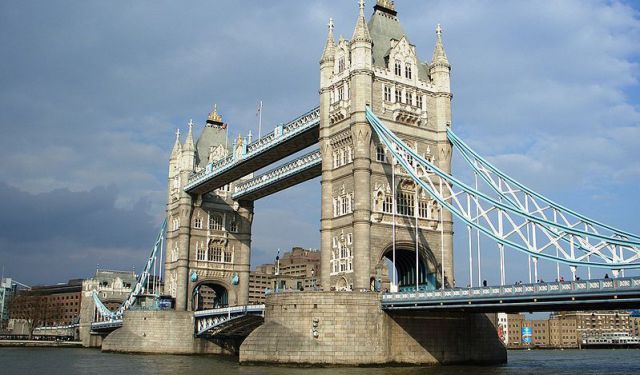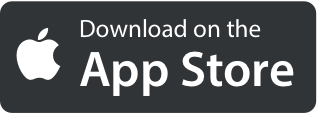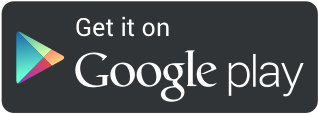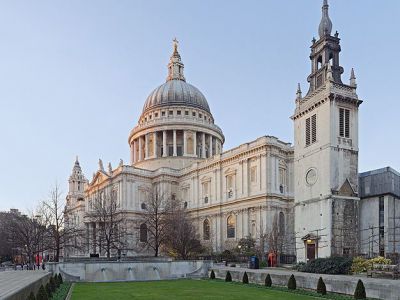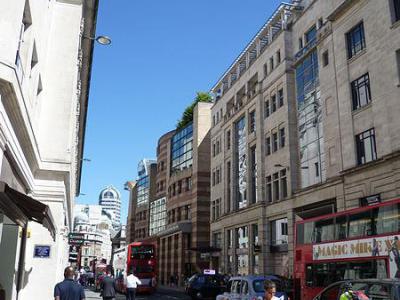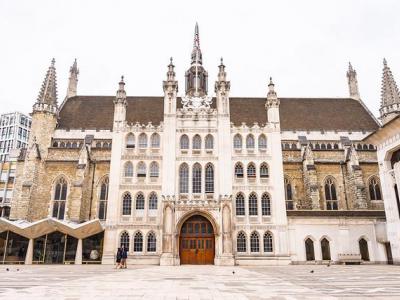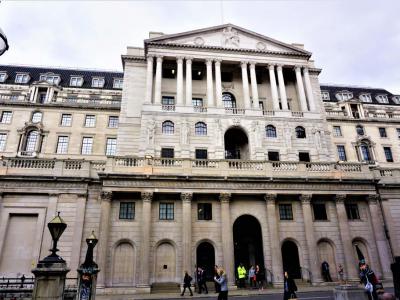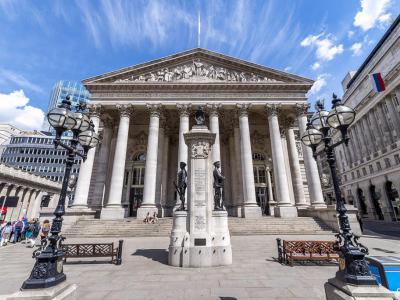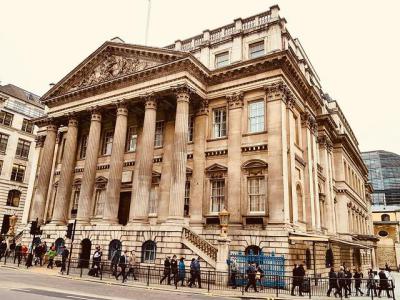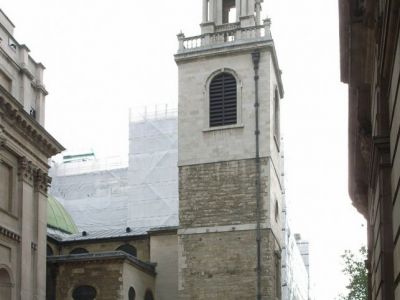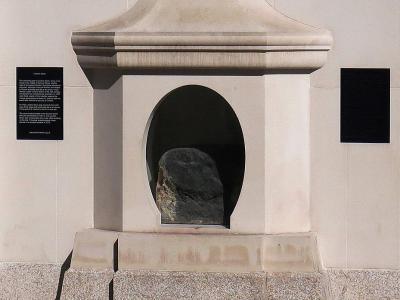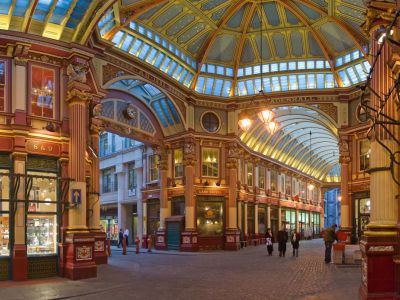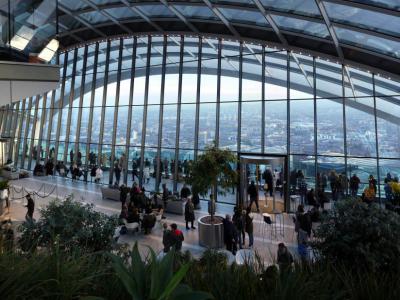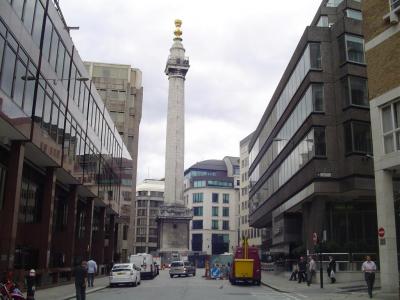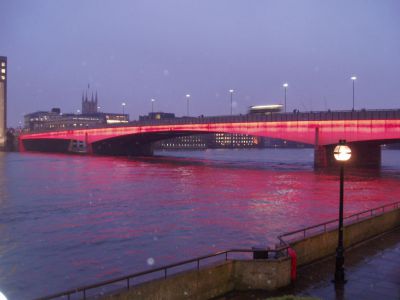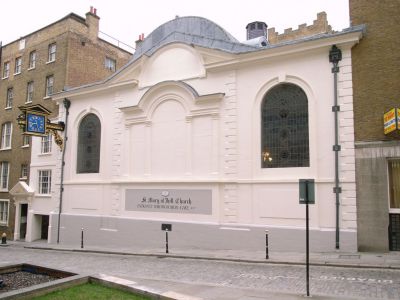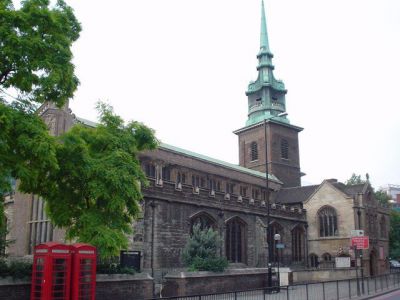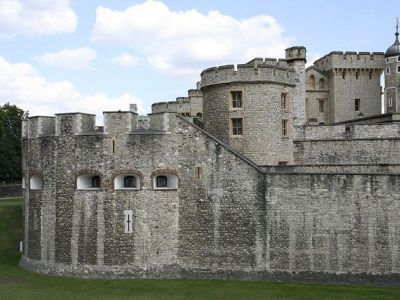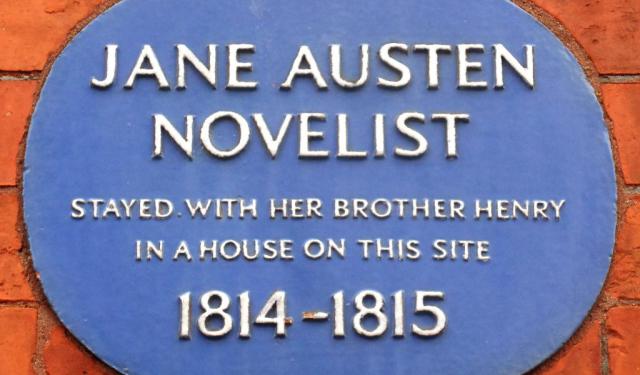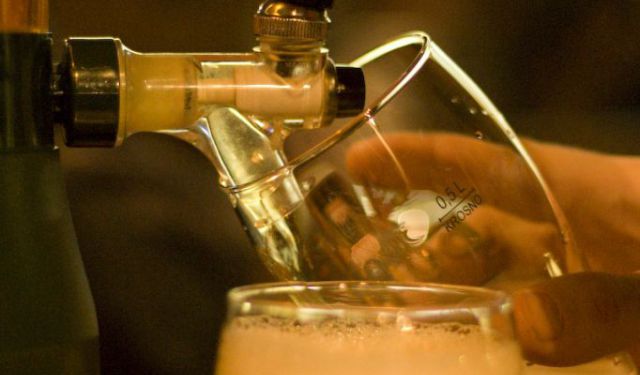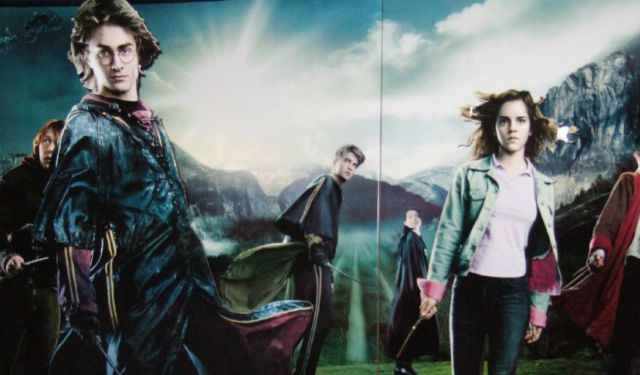Audio Guide: City of London Walking Tour (Self Guided), London
The City of London, often referred to simply as the City (with the capital C), is the historic and financial core of the British capital. Despite being just over one square mile in area (for which reason it is also lovingly dubbed the Square Mile), it holds immense importance as the original site of Londinium, the Roman settlement founded circa 43 AD. Over the centuries, this small patch of land evolved into a global financial powerhouse. Today, it seamlessly blends Roman ruins, medieval alleyways, grand cathedrals, and towering glass skyscrapers, offering a rich journey through time in just a few blocks.
By the Middle Ages, the City had gained independence, and with it, its own Lord Mayor, the ceremonial role that continues to this day. The area was almost completely destroyed during the Great Fire of London in 1666, but its rebirth-led by architect Sir Christopher Wren-gave the City one of its most iconic landmarks: St. Paul’s Cathedral, with its massive dome and famous whispering gallery.
As London’s financial nerve center, the City is home to the Bank of England, the Royal Stock Exchange, Lloyd's of London, and many global corporations. For visitors interested in finance, the Bank of England Museum offers an engaging look at economic history, complete with a real gold bar to try lifting...
But there's more than just finance here. The Guildhall remains the seat of the City’s government, while Leadenhall Market enchants visitors with its ornate Victorian design, boutique shops, and lively pubs. Film buffs might also recognize it from the Harry Potter movies.
Other must-see attractions include The Monument, a towering column commemorating the Great Fire, and the Sky Garden, a free-to-visit rooftop oasis with panoramic views (advance booking recommended). Nearby, the Tower Bridge and London Bridge span the Thames, while the Tower of London-just outside the City boundaries-offers a deep dive into royal and military history.
Weekends are the best time to explore the City’s quieter streets, ideal for a self-guided walking tour. Whether you're after Roman walls, financial lore, or a pint in a historic pub, the City of London offers a compact but captivating experience of past and present, side by side.
By the Middle Ages, the City had gained independence, and with it, its own Lord Mayor, the ceremonial role that continues to this day. The area was almost completely destroyed during the Great Fire of London in 1666, but its rebirth-led by architect Sir Christopher Wren-gave the City one of its most iconic landmarks: St. Paul’s Cathedral, with its massive dome and famous whispering gallery.
As London’s financial nerve center, the City is home to the Bank of England, the Royal Stock Exchange, Lloyd's of London, and many global corporations. For visitors interested in finance, the Bank of England Museum offers an engaging look at economic history, complete with a real gold bar to try lifting...
But there's more than just finance here. The Guildhall remains the seat of the City’s government, while Leadenhall Market enchants visitors with its ornate Victorian design, boutique shops, and lively pubs. Film buffs might also recognize it from the Harry Potter movies.
Other must-see attractions include The Monument, a towering column commemorating the Great Fire, and the Sky Garden, a free-to-visit rooftop oasis with panoramic views (advance booking recommended). Nearby, the Tower Bridge and London Bridge span the Thames, while the Tower of London-just outside the City boundaries-offers a deep dive into royal and military history.
Weekends are the best time to explore the City’s quieter streets, ideal for a self-guided walking tour. Whether you're after Roman walls, financial lore, or a pint in a historic pub, the City of London offers a compact but captivating experience of past and present, side by side.
How it works: Download the app "GPSmyCity: Walks in 1K+ Cities" from Apple App Store or Google Play Store to your mobile phone or tablet. The app turns your mobile device into a personal tour guide and its built-in GPS navigation functions guide you from one tour stop to next. The app works offline, so no data plan is needed when traveling abroad.
City of London Walking Tour Map
Guide Name: City of London Walking Tour
Guide Location: England » London (See other walking tours in London)
Guide Type: Self-guided Walking Tour (Sightseeing)
# of Attractions: 16
Tour Duration: 3 Hour(s)
Travel Distance: 4.6 Km or 2.9 Miles
Author: DanaOffice
Sight(s) Featured in This Guide:
Guide Location: England » London (See other walking tours in London)
Guide Type: Self-guided Walking Tour (Sightseeing)
# of Attractions: 16
Tour Duration: 3 Hour(s)
Travel Distance: 4.6 Km or 2.9 Miles
Author: DanaOffice
Sight(s) Featured in This Guide:
- St. Paul's Cathedral
- Cheapside
- Guildhall
- Bank of England Museum
- Royal Exchange
- Mansion House
- St. Stephen Walbrook
- London Stone
- Leadenhall Market
- Sky Garden
- The Monument
- London Bridge
- St. Mary-at-Hill
- All Hallows-by-the-Tower
- Tower of London
- Tower Bridge
1) St. Paul's Cathedral (must see)
For centuries, Saint Paul's Cathedral has stood tall, quite literally, as London’s ultimate comeback story in stone form. After the Great Fire of 1666 turned the medieval cathedral (originally founded in 1087) into a smoldering memory, Sir Christopher Wren got the challenge of designing the masterpiece we see today.
Construction began in 1675 and took 35 years. Wren’s first design was too modern. The second-too modern again and too Catholic-looking. He eventually struck a deal with the Anglican clergy: throw in a classic English spire, but sneak in a magnificent triple-stacked dome instead. Now it’s the second-largest cathedral dome in the world after St. Peter’s in Rome. Subtle flex.
During WWII and the Blitz, flames again came for the cathedral, and again, it stood its ground. Brave volunteers fought fires on the dome, saving it from complete destruction. Saint Paul’s became a beacon of hope in the rubble. Fittingly, above the south entrance, you’ll spot the Latin word "Resurgam," meaning “I shall rise again.” Very on brand.
Inside, the cathedral is pure English Baroque drama. Climb 257 steps to the Whispering Gallery, where even your gossip echoes in style. Add another 119 steps for the Stone Gallery and 152 more for the Golden Gallery-because apparently, stairs build character. But the panoramic views of London are worth every calf cramp.
Down below in the crypt, you’ll find the final resting places of national legends: the Duke of Wellington, Admiral Nelson, and of course, Wren himself. His epitaph reads: “If you seek his monument, look around you.”
Saint Paul’s was basically Dickens' favorite rooftop. In Master Humphrey’s Clock, he climbs to the top for a bird’s eye view of life’s contradictions, which, come to think of it, London is full of. In David Copperfield, Peggotty enjoys the view too. Dickens knew this neighborhood well and even attended the Duke of Wellington’s funeral here in 1852.
Back in Shakespeare’s day, the area around Saint Paul’s was bustling with booksellers. This was the epicenter of the English publishing world- the Bard’s plays were printed and sold right here. Odds are he browsed the stalls himself, possibly muttering, “To plagiarize, or not to plagiarize...”
And for the modern-day wizarding crowd: yes, that staircase you recognize from Harry Potter and the Prisoner of Azkaban is real. The magical-looking Geometric Staircase-aka the Dean’s Stair-floats elegantly in the cathedral’s South West Bell Tower. You might remember it from Professor Trelawney’s Divination class or The Goblet of Fire. You’ll need a ticket to see it, but for Potterheads, it’s practically a rite of passage.
Tip:
Book online to skip the queue. And maybe spring for the audio tour-unless you’ve got me in your ear, of course.
Construction began in 1675 and took 35 years. Wren’s first design was too modern. The second-too modern again and too Catholic-looking. He eventually struck a deal with the Anglican clergy: throw in a classic English spire, but sneak in a magnificent triple-stacked dome instead. Now it’s the second-largest cathedral dome in the world after St. Peter’s in Rome. Subtle flex.
During WWII and the Blitz, flames again came for the cathedral, and again, it stood its ground. Brave volunteers fought fires on the dome, saving it from complete destruction. Saint Paul’s became a beacon of hope in the rubble. Fittingly, above the south entrance, you’ll spot the Latin word "Resurgam," meaning “I shall rise again.” Very on brand.
Inside, the cathedral is pure English Baroque drama. Climb 257 steps to the Whispering Gallery, where even your gossip echoes in style. Add another 119 steps for the Stone Gallery and 152 more for the Golden Gallery-because apparently, stairs build character. But the panoramic views of London are worth every calf cramp.
Down below in the crypt, you’ll find the final resting places of national legends: the Duke of Wellington, Admiral Nelson, and of course, Wren himself. His epitaph reads: “If you seek his monument, look around you.”
Saint Paul’s was basically Dickens' favorite rooftop. In Master Humphrey’s Clock, he climbs to the top for a bird’s eye view of life’s contradictions, which, come to think of it, London is full of. In David Copperfield, Peggotty enjoys the view too. Dickens knew this neighborhood well and even attended the Duke of Wellington’s funeral here in 1852.
Back in Shakespeare’s day, the area around Saint Paul’s was bustling with booksellers. This was the epicenter of the English publishing world- the Bard’s plays were printed and sold right here. Odds are he browsed the stalls himself, possibly muttering, “To plagiarize, or not to plagiarize...”
And for the modern-day wizarding crowd: yes, that staircase you recognize from Harry Potter and the Prisoner of Azkaban is real. The magical-looking Geometric Staircase-aka the Dean’s Stair-floats elegantly in the cathedral’s South West Bell Tower. You might remember it from Professor Trelawney’s Divination class or The Goblet of Fire. You’ll need a ticket to see it, but for Potterheads, it’s practically a rite of passage.
Tip:
Book online to skip the queue. And maybe spring for the audio tour-unless you’ve got me in your ear, of course.
2) Cheapside
In the heart of London, Cheapside is where London’s medieval market culture meets 21st-century urban energy. This street has been a commercial powerhouse since before any of our great-great-great-great-grandparents were born. The name "Cheapside" comes from the Old English word “ceap,” meaning "market," which is fitting, because from the 12th to the 16th century, this place was indeed the city's main commercial area. It bustled with vendors selling essentials like bread, milk, poultry, and honey, which is still reflected in the names of the surrounding streets-Bread Street, Milk Street, Poultry, and the now-adorably vanished Honey Lane.
Originally the artery of a city accommodating a modest 200,000 citizens, Cheapside remained loud, proud, and crowded well into the 19th century, so much so that even Charles Dickens couldn’t resist throwing it into his novels. In Great Expectations, Pip calls it “all asmear with filth and fat and blood,” which sounds gross, but very on brand for Victorian London. And yes, that giant dome brooding over it all-St. Paul’s Cathedral gave every grimy detail some architectural gravitas.
Dickens’s son, Charles Dickens, Jr., called Cheapside “the busiest and most vital thoroughfare in London,” only rivaled by London Bridge. Clearly, this street was not one to be outdone.
Nowadays, Cheapside hasn’t missed a beat. It's still buzzing, just with fewer poultry vendors and more cappuccino options. You’ve got historic gems like Guildhall, Bow Church, and Postman’s Park sitting comfortably beside the sleek, modern vibes of One New Change-a shopping center with restaurants, retail, and a rooftop terrace that serves you full-on cinematic views of St. Paul’s and the London skyline.
In short, Cheapside is the place where you can shop, stroll, and soak in layers of city history-all within a few minutes’ walk from one of the capital’s most iconic cathedrals. With its unique mix of grit and grandeur, Cheapside continues to tell the story of London’s past while thriving firmly in its present.
Originally the artery of a city accommodating a modest 200,000 citizens, Cheapside remained loud, proud, and crowded well into the 19th century, so much so that even Charles Dickens couldn’t resist throwing it into his novels. In Great Expectations, Pip calls it “all asmear with filth and fat and blood,” which sounds gross, but very on brand for Victorian London. And yes, that giant dome brooding over it all-St. Paul’s Cathedral gave every grimy detail some architectural gravitas.
Dickens’s son, Charles Dickens, Jr., called Cheapside “the busiest and most vital thoroughfare in London,” only rivaled by London Bridge. Clearly, this street was not one to be outdone.
Nowadays, Cheapside hasn’t missed a beat. It's still buzzing, just with fewer poultry vendors and more cappuccino options. You’ve got historic gems like Guildhall, Bow Church, and Postman’s Park sitting comfortably beside the sleek, modern vibes of One New Change-a shopping center with restaurants, retail, and a rooftop terrace that serves you full-on cinematic views of St. Paul’s and the London skyline.
In short, Cheapside is the place where you can shop, stroll, and soak in layers of city history-all within a few minutes’ walk from one of the capital’s most iconic cathedrals. With its unique mix of grit and grandeur, Cheapside continues to tell the story of London’s past while thriving firmly in its present.
3) Guildhall
Beneath the polished pavements of London’s financial district lies a time capsule of chaos, ceremony, and some really ancient civic drama-Roman ruins, Saxon leftovers, and medieval meeting halls-all packed into one square. And right in the middle of it stands the Guildhall-one of the capital’s oldest and most historically significant buildings, offering a fascinating look at over 2,000 years of London’s civic life. Built on a site that dates back to Roman times, the Guildhall has stood as a center for governance since the 12th century and continues to serve as the ceremonial and administrative core of the City of London Corporation.
The current building was completed in 1411, and its most impressive space, the Great Hall, has witnessed major events, including the infamous trial of Lady Jane Grey (charged with and executed for high treason) in 1553. Remarkably, the hall survived both the Great Fire of London in 1666 and World War II bombings, although repairs were required after each disaster. Inside, visitors can marvel at its vaulted ceilings, stained-glass windows, and the legendary statues of Gog and Magog, the mythical protectors of the City.
Right next door is the Guildhall Art Gallery, which offers free admission and houses one of London’s finest collections of Victorian art. The gallery is arranged around themes like work, leisure, beauty, and faith, and features stunning Pre-Raphaelite pieces. But the real surprise lies in the basement: the preserved ruins of a Roman amphitheater, discovered during construction works in 1988. Its circular footprint in the courtyard above hints at the ancient structure that once stood there.
For history lovers, there’s more-the medieval crypts beneath the Guildhall are some of the largest and oldest in London, exuding the shadowy allure of centuries past. While much of the Guildhall is used for official events, occasional guided tours and open days allow visitors to explore its storied interiors.
The Guildhall isn’t just old-it’s layered like a very cultured onion with a taste of London’s political past. A rather rewarding and atmospheric stop, it offers a quieter alternative to the City’s bigger tourist sites-but with just as much drama, myth, and beauty built into its stone walls.
The current building was completed in 1411, and its most impressive space, the Great Hall, has witnessed major events, including the infamous trial of Lady Jane Grey (charged with and executed for high treason) in 1553. Remarkably, the hall survived both the Great Fire of London in 1666 and World War II bombings, although repairs were required after each disaster. Inside, visitors can marvel at its vaulted ceilings, stained-glass windows, and the legendary statues of Gog and Magog, the mythical protectors of the City.
Right next door is the Guildhall Art Gallery, which offers free admission and houses one of London’s finest collections of Victorian art. The gallery is arranged around themes like work, leisure, beauty, and faith, and features stunning Pre-Raphaelite pieces. But the real surprise lies in the basement: the preserved ruins of a Roman amphitheater, discovered during construction works in 1988. Its circular footprint in the courtyard above hints at the ancient structure that once stood there.
For history lovers, there’s more-the medieval crypts beneath the Guildhall are some of the largest and oldest in London, exuding the shadowy allure of centuries past. While much of the Guildhall is used for official events, occasional guided tours and open days allow visitors to explore its storied interiors.
The Guildhall isn’t just old-it’s layered like a very cultured onion with a taste of London’s political past. A rather rewarding and atmospheric stop, it offers a quieter alternative to the City’s bigger tourist sites-but with just as much drama, myth, and beauty built into its stone walls.
4) Bank of England Museum
Undoubtedly, the thick walls of this storied institution could tell you a lot about money, power, and its peculiar nickname “The Old Lady of Threadneedle Street.” That’s the enduring moniker for the Bank of England, a title born from a satirical cartoon but now firmly lodged in financial folklore.
Founded in 1694, the Bank was originally tasked with propping up a cash-strapped government. These days, it’s doing quite a bit more than just keeping the royal purse tidy. Think currency printing, interest rate setting, foreign exchange watching, and gold-hoarding-all in a day’s work. Since 1997, it’s even been the U.K.’s answer to the U.S. Federal Reserve, steering monetary policy and tweaking interest rates while economists squint at inflation charts.
Now, about that grand structure on Threadneedle Street-it spans a solid three acres and is wrapped in a stern, windowless Neoclassical curtain wall designed by Sir John Soane back in 1828. While the original bank building was bulldozed in the 1920s, this dramatic outer wall still stands like a fortress of finance, guarding centuries of secrets and, let’s be honest, a fair bit of gold...
Speaking of gold: just around the corner, on Bartholomew Lane, the Bank of England Museum offers a deep dive into the bank’s fascinating past. Here you’ll find everything from the original Royal Charter to high-tech interactive displays-yes, you can actually simulate taming inflation, and it’s more fun than it sounds.
But the star of the show is a real gold bar, gleaming in a glass case, just waiting for visitors to try lifting it. Note: it’s heavier than it looks-and no, you can’t sneak it out in your backpack. The security knows all your tricks.
So, whether you're into economics or just gold-digging history, this Old Lady is full of surprises.
Founded in 1694, the Bank was originally tasked with propping up a cash-strapped government. These days, it’s doing quite a bit more than just keeping the royal purse tidy. Think currency printing, interest rate setting, foreign exchange watching, and gold-hoarding-all in a day’s work. Since 1997, it’s even been the U.K.’s answer to the U.S. Federal Reserve, steering monetary policy and tweaking interest rates while economists squint at inflation charts.
Now, about that grand structure on Threadneedle Street-it spans a solid three acres and is wrapped in a stern, windowless Neoclassical curtain wall designed by Sir John Soane back in 1828. While the original bank building was bulldozed in the 1920s, this dramatic outer wall still stands like a fortress of finance, guarding centuries of secrets and, let’s be honest, a fair bit of gold...
Speaking of gold: just around the corner, on Bartholomew Lane, the Bank of England Museum offers a deep dive into the bank’s fascinating past. Here you’ll find everything from the original Royal Charter to high-tech interactive displays-yes, you can actually simulate taming inflation, and it’s more fun than it sounds.
But the star of the show is a real gold bar, gleaming in a glass case, just waiting for visitors to try lifting it. Note: it’s heavier than it looks-and no, you can’t sneak it out in your backpack. The security knows all your tricks.
So, whether you're into economics or just gold-digging history, this Old Lady is full of surprises.
5) Royal Exchange
Easily the most dashing and well-dressed member of the Bank of England’s extended architectural family is the Royal Exchange-a financial fashion icon since 1570, thanks to the deep pockets of one Thomas Gresham, the English merchant and financier who acted on behalf of Queen Elizabeth I. You can still spot his blingy family mascot-a golden grasshopper-lounging proudly on the rooftop.
Back in Gresham’s day, the word “stock” didn’t mean tech shares or hedge funds-it meant actual stuff. You know, barrels of fish, bolts of cloth, or perhaps a goat or two being loaded off ships from the Thames. But Londoners, being the enterprising folks they are, eventually swapped the livestock for little slips of paper-and thus, futures trading was born. The need for money changers and bankers quickly followed, and soon, the City’s financial district was buzzing louder than a trading floor on a caffeine binge.
The version of the Royal Exchange we see today-complete with its grand eight-column portico and steps tailor-made for posing with your sandwich-dates back to the 1840s and is actually the third rebuild after a couple of inconvenient fires. These days, instead of frantic traders, you’ll find luxury boutiques and shops that gently remind you that your bank account isn’t quite in Gresham's territory.
Still, it's absolutely worth stepping inside to admire the inner courtyard: a classy affair with a tiled floor, a glowing glazed roof, and some impressive half-columns strutting their stuff in not one, but three classical styles (because one would be too basic). While you're there, treat yourself at Fortnum’s Bar and Restaurant, perched on the mezzanine like a cat with a credit card, where you can sip something fancy while soaking in frescoes that chart the City’s history-because who doesn’t love a side of art with their aperitif?
Back in Gresham’s day, the word “stock” didn’t mean tech shares or hedge funds-it meant actual stuff. You know, barrels of fish, bolts of cloth, or perhaps a goat or two being loaded off ships from the Thames. But Londoners, being the enterprising folks they are, eventually swapped the livestock for little slips of paper-and thus, futures trading was born. The need for money changers and bankers quickly followed, and soon, the City’s financial district was buzzing louder than a trading floor on a caffeine binge.
The version of the Royal Exchange we see today-complete with its grand eight-column portico and steps tailor-made for posing with your sandwich-dates back to the 1840s and is actually the third rebuild after a couple of inconvenient fires. These days, instead of frantic traders, you’ll find luxury boutiques and shops that gently remind you that your bank account isn’t quite in Gresham's territory.
Still, it's absolutely worth stepping inside to admire the inner courtyard: a classy affair with a tiled floor, a glowing glazed roof, and some impressive half-columns strutting their stuff in not one, but three classical styles (because one would be too basic). While you're there, treat yourself at Fortnum’s Bar and Restaurant, perched on the mezzanine like a cat with a credit card, where you can sip something fancy while soaking in frescoes that chart the City’s history-because who doesn’t love a side of art with their aperitif?
6) Mansion House
Mansion House in the City of London is the official residence of the Lord Mayor of London-not to be confused with the more modern "Mayor of London." Built between 1739 and 1753, this mansion was designed by George Dance the Elder, in the Palladian style, exuding all the grandeur you'd expect from the home of the City’s top ceremonial figure. As such, the building has long been a symbol of civic pride and financial prestige.
At the core of the house lies the Egyptian Hall, an impressive banquet space named not for its design theme, but because "Egyptian" once meant "exotic" and awe-inspiring. The hall is distinguished by towering columns and a barrel-vaulted ceiling with coffered panels. It regularly hosts high-profile events, including the Lord Mayor’s Banquet, where the Prime Minister and other dignitaries deliver significant political speeches over multi-course meals and fine silverware.
The Mansion House also serves as a mini-museum of sorts. Visitors lucky enough to join a guided tour-available weekly and during events like Open House London-can view an array of opulent rooms such as the Court Room, the ballroom, and the grand staircase. The interiors are adorned with Corinthian columns, crystal chandeliers, and gilded details. The mansion houses an impressive collection of gold and silver regalia, including a 36-pound gold mace and the pearl sword given by Queen Elizabeth I. There's also a striking art collection.
In essence, Mansion House is where tradition, ceremony, and history quietly mingle beneath a veneer of neoclassical splendor. Though walk-ins aren’t allowed, there are tours operating on a “first-come, first-served” basis via the Walbrook entrance; no prior booking is needed. But even from the outside, the building is an architectural gem-perfectly situated near Bank Junction, close to the Bank of England Museum, Royal Exchange, and St. Stephen Walbrook church.
After visiting, you might stroll along Cornhill to see a statue of James Henry Greathead, a pioneer of underground railway technology, and stop for a pint at The Counting House, a former bank-turned-pub with ornate interiors and classic London charm.
At the core of the house lies the Egyptian Hall, an impressive banquet space named not for its design theme, but because "Egyptian" once meant "exotic" and awe-inspiring. The hall is distinguished by towering columns and a barrel-vaulted ceiling with coffered panels. It regularly hosts high-profile events, including the Lord Mayor’s Banquet, where the Prime Minister and other dignitaries deliver significant political speeches over multi-course meals and fine silverware.
The Mansion House also serves as a mini-museum of sorts. Visitors lucky enough to join a guided tour-available weekly and during events like Open House London-can view an array of opulent rooms such as the Court Room, the ballroom, and the grand staircase. The interiors are adorned with Corinthian columns, crystal chandeliers, and gilded details. The mansion houses an impressive collection of gold and silver regalia, including a 36-pound gold mace and the pearl sword given by Queen Elizabeth I. There's also a striking art collection.
In essence, Mansion House is where tradition, ceremony, and history quietly mingle beneath a veneer of neoclassical splendor. Though walk-ins aren’t allowed, there are tours operating on a “first-come, first-served” basis via the Walbrook entrance; no prior booking is needed. But even from the outside, the building is an architectural gem-perfectly situated near Bank Junction, close to the Bank of England Museum, Royal Exchange, and St. Stephen Walbrook church.
After visiting, you might stroll along Cornhill to see a statue of James Henry Greathead, a pioneer of underground railway technology, and stop for a pint at The Counting House, a former bank-turned-pub with ornate interiors and classic London charm.
7) St. Stephen Walbrook
St. Stephen Walbrook, the parish church of the Lord Mayor, is the kind of building that hides genius behind modesty. Designed by none other than Sir Christopher Wren himself between 1672 and 1679, this church is often considered the crown jewel of his many City creations. In fact, its splendid dome-with its intricate plasterwork and elegant coffering-was something of a dress rehearsal for his later hit, St. Paul’s Cathedral.
From the outside, you might think you’ve stumbled upon just another old London church. But step inside and-bam!-the space opens up into a light-filled, domed wonder, ringed by graceful columns. It's the architectural equivalent of a surprise party. Look closer and you’ll spot beautifully carved figures decorating the font cover and pulpit canopy, which seem to float in artistic conversation with a massive, minimalist white stone altar by Henry Moore-a modernist touch that somehow feels perfectly at home in this classical space.
And then there’s the telephone in a glass case-yes, that's right-a touching tribute to Rector Chad Varah, who, in 1953, picked up that phone and founded the Samaritans-a now world-famous helpline offering a listening ear to anyone in emotional distress. Sometimes, a simple call can change everything...
St. Stephen’s is also home to the London Internet Church-yes, church meets Wi-Fi. It brings together believers from across the globe for worship and spirited discussions, all in the digital realm.
And if music is your thing, you’re in luck. The church runs a vibrant program of free concerts, including Tuesday lunchtime performances at 1 pm and Friday organ recitals at 12:30 pm.
Tip:
Bring a sandwich-yes, lunch and Bach are totally encouraged here.
From the outside, you might think you’ve stumbled upon just another old London church. But step inside and-bam!-the space opens up into a light-filled, domed wonder, ringed by graceful columns. It's the architectural equivalent of a surprise party. Look closer and you’ll spot beautifully carved figures decorating the font cover and pulpit canopy, which seem to float in artistic conversation with a massive, minimalist white stone altar by Henry Moore-a modernist touch that somehow feels perfectly at home in this classical space.
And then there’s the telephone in a glass case-yes, that's right-a touching tribute to Rector Chad Varah, who, in 1953, picked up that phone and founded the Samaritans-a now world-famous helpline offering a listening ear to anyone in emotional distress. Sometimes, a simple call can change everything...
St. Stephen’s is also home to the London Internet Church-yes, church meets Wi-Fi. It brings together believers from across the globe for worship and spirited discussions, all in the digital realm.
And if music is your thing, you’re in luck. The church runs a vibrant program of free concerts, including Tuesday lunchtime performances at 1 pm and Friday organ recitals at 12:30 pm.
Tip:
Bring a sandwich-yes, lunch and Bach are totally encouraged here.
8) London Stone
If you’re wandering through the City of London and trying to find its beating heart, you might point to the Bank of England-or maybe the stately Guildhall. But the true center, the one shrouded in myth and mystery, is… a rock. Yes, a rather unremarkable chunk of limestone known as the London Stone.
Tucked behind iron bars on the exterior wall of 111 Cannon Street, right where it meets St. Swithin’s Lane, this humble block has been sitting around since Roman times-allegedly hauled over from Bath. Not impressed? Well, try this: during the 1450 Peasants’ Revolt, rebel leader Jack Cade marched in from Kent, smacked the stone with his sword, and proclaimed himself "Lord of the City." Bold move. Unfortunately for Jack, declaring yourself king by bashing a rock turned out to be less effective than he’d hoped-his rebellion (and reign) ended just as dramatically as it began.
Now, legends cling to the London Stone like pigeons to a statue. Some say it’s a Druidic altar, others claim it was a Roman milestone. Even William Blake, the poet, wrote about it in his usual ominous fashion. One persistent myth claimed that if the stone were ever moved, disaster would follow.
Naturally, London has moved it… several times.
In 1742, it was shifted next to St. Swithin’s Church. In 1940, the church was blitzed to rubble. Then the stone sat beside an office building-until that came down in 2016. Briefly sent to the Museum of London, the stone returned in 2018, now safely embedded in the latest glass-and-steel iteration of 111 Cannon Street.
So far, the world hasn’t ended. But the stone’s mystique lives on-part relic, part urban legend, and fully committed to staying put. At least for now...
Tucked behind iron bars on the exterior wall of 111 Cannon Street, right where it meets St. Swithin’s Lane, this humble block has been sitting around since Roman times-allegedly hauled over from Bath. Not impressed? Well, try this: during the 1450 Peasants’ Revolt, rebel leader Jack Cade marched in from Kent, smacked the stone with his sword, and proclaimed himself "Lord of the City." Bold move. Unfortunately for Jack, declaring yourself king by bashing a rock turned out to be less effective than he’d hoped-his rebellion (and reign) ended just as dramatically as it began.
Now, legends cling to the London Stone like pigeons to a statue. Some say it’s a Druidic altar, others claim it was a Roman milestone. Even William Blake, the poet, wrote about it in his usual ominous fashion. One persistent myth claimed that if the stone were ever moved, disaster would follow.
Naturally, London has moved it… several times.
In 1742, it was shifted next to St. Swithin’s Church. In 1940, the church was blitzed to rubble. Then the stone sat beside an office building-until that came down in 2016. Briefly sent to the Museum of London, the stone returned in 2018, now safely embedded in the latest glass-and-steel iteration of 111 Cannon Street.
So far, the world hasn’t ended. But the stone’s mystique lives on-part relic, part urban legend, and fully committed to staying put. At least for now...
9) Leadenhall Market
The origins of Leadenhall Market date back to the 14th century. Its name is a nod to the lead roof that once covered the medieval market hall. The location itself marks the former site of an ancient Roman forum and basilica from the days of Londinium, thus making it steeped in over two millennia of history.
The current building, a stunning example of Victorian architecture, with its distinctive glass canopy, wrought iron details, decorative arches, and intricate detailing, was redesigned in 1881 by Sir Horace Jones, the very same architect who gave us Tower Bridge.
Once the go-to place for meat, poultry, and game, Leadenhall now leans more toward wine bars, boutiques, and bistro bites, though you’ll still spot original iron meat hooks (if you look up) and even a traditional shoeshine station. Stroll its cobbled paths and you’ll find city suits mingling with selfie-takers, all basking in that golden Victorian glow. In this 21st-century era of towering skyscrapers, it survives solely due to government protection.
In recent years, Leadenhall has been a major pop culture draw for its connection to the Harry Potter movies. The surreal contrast between its ancient charm and the surrounding towers of steel is thought to have inspired J.K. Rowling’s vision for Diagon Alley- a romantic slice of London’s past, nestled right under the glassy gaze of corporate high-risers.
In particular, the market served as the filming location for parts of Harry Potter and the Philosopher’s Stone and The Goblet of Fire, specifically as the entrance to Diagon Alley. At 42 Bull's Head Passage, a humble blue doorway is easily recognizable as that leading to the Leaky Cauldron pub (in the movies). Today, the shop is home to Glass House Opticians, so you might even chance upon Mad-Eye Moody here, getting fitted for a contact lens with a bit of luck...
Indeed, whether you’re here for the history, the architecture, a cheeky pint, or just to whisper “Alohomora” at random doors, Leadenhall Market delivers all the same. It's London-layered, lively, and just a little bit enchanted.
The current building, a stunning example of Victorian architecture, with its distinctive glass canopy, wrought iron details, decorative arches, and intricate detailing, was redesigned in 1881 by Sir Horace Jones, the very same architect who gave us Tower Bridge.
Once the go-to place for meat, poultry, and game, Leadenhall now leans more toward wine bars, boutiques, and bistro bites, though you’ll still spot original iron meat hooks (if you look up) and even a traditional shoeshine station. Stroll its cobbled paths and you’ll find city suits mingling with selfie-takers, all basking in that golden Victorian glow. In this 21st-century era of towering skyscrapers, it survives solely due to government protection.
In recent years, Leadenhall has been a major pop culture draw for its connection to the Harry Potter movies. The surreal contrast between its ancient charm and the surrounding towers of steel is thought to have inspired J.K. Rowling’s vision for Diagon Alley- a romantic slice of London’s past, nestled right under the glassy gaze of corporate high-risers.
In particular, the market served as the filming location for parts of Harry Potter and the Philosopher’s Stone and The Goblet of Fire, specifically as the entrance to Diagon Alley. At 42 Bull's Head Passage, a humble blue doorway is easily recognizable as that leading to the Leaky Cauldron pub (in the movies). Today, the shop is home to Glass House Opticians, so you might even chance upon Mad-Eye Moody here, getting fitted for a contact lens with a bit of luck...
Indeed, whether you’re here for the history, the architecture, a cheeky pint, or just to whisper “Alohomora” at random doors, Leadenhall Market delivers all the same. It's London-layered, lively, and just a little bit enchanted.
10) Sky Garden
Designed by Uruguayan architect Rafael Viñoly, 20 Fenchurch Street is better known by its catchier nickname-the “Walkie-Talkie.” Why? Well, because it looks exactly like one, just supersized and stuck smack in the London skyline. Not everyone is a fan of its chunky silhouette, but love it or mock it, the building makes quite the statement-and unlike most skyscrapers, it actually lets the public in for free.
At the top sits the Sky Garden, a three-story glass crown perched on the 35th, 36th, and 37th floors. To get in, you’ll need to be quick on the click-free tickets drop every Monday, and they vanish faster than a London cab on a rainy night. Once you’ve secured your spot, you’ll be treated to one of the best panoramic views in the city, complete with a side of wine or dinner if you book a table. Yes, the bars and restaurants stay open late for those who like their skyline with a cocktail.
From this lofty perch, the view is a who’s who of London’s architectural elite: look south for the jagged elegance of The Shard, or north for a full lineup of nicknamed giants-Tower 42, the Gherkin, the Cheesegrater, the Scalpel, and the tall-and-polished 22 Bishopsgate.
As for the “garden” part of Sky Garden, it’s not just a name. You’ll find a leafy collection of semitropical trees, succulents, and flowering showstoppers like African lilies, Red Hot Pokers, and Birds of Paradise, all bordered by wafts of French lavender. It’s basically a high-rise greenhouse with views, drinks, and a better Instagram ratio than most city parks.
Bottom line: whether you’re a lover of lush greenery, skyline spotting, or just in it for the gram-the Walkie-Talkie talks back.
At the top sits the Sky Garden, a three-story glass crown perched on the 35th, 36th, and 37th floors. To get in, you’ll need to be quick on the click-free tickets drop every Monday, and they vanish faster than a London cab on a rainy night. Once you’ve secured your spot, you’ll be treated to one of the best panoramic views in the city, complete with a side of wine or dinner if you book a table. Yes, the bars and restaurants stay open late for those who like their skyline with a cocktail.
From this lofty perch, the view is a who’s who of London’s architectural elite: look south for the jagged elegance of The Shard, or north for a full lineup of nicknamed giants-Tower 42, the Gherkin, the Cheesegrater, the Scalpel, and the tall-and-polished 22 Bishopsgate.
As for the “garden” part of Sky Garden, it’s not just a name. You’ll find a leafy collection of semitropical trees, succulents, and flowering showstoppers like African lilies, Red Hot Pokers, and Birds of Paradise, all bordered by wafts of French lavender. It’s basically a high-rise greenhouse with views, drinks, and a better Instagram ratio than most city parks.
Bottom line: whether you’re a lover of lush greenery, skyline spotting, or just in it for the gram-the Walkie-Talkie talks back.
11) The Monument
Standing tall at the corner of Monument Street and Fish Street Hill is one of London’s most dramatic memorials: The Monument to the Great Fire of London, or simply The Monument, if you’re short on time (or breath after the climb).
This towering tribute to catastrophe was dreamed up by Sir Christopher Wren and his scientifically-minded pal Dr. Robert Hooke. Built between 1671 and 1677, it marks the spot-well, almost. The fire started 202 feet away in a bakery on Pudding Lane, and wouldn’t you know it, the column stands exactly 202 feet tall. Coincidence? Absolutely not.
Crafted from elegant Portland stone, The Monument is a fluted Doric column crowned with a dramatic golden urn of fire-because subtlety is overrated when you're commemorating one of London's biggest disasters. And it’s not just a pretty face: for a brief time, this beauty moonlighted as a scientific instrument, designed to observe stars and study gravity. It didn’t revolutionize astronomy, but scored points for ambition...
If you're feeling brave, you can climb all 311 spiral steps to the top viewing platform, 160 feet above the city streets. The reward is the sweeping views of London and a mild cardio workout. Not in the mood to huff and puff? No worries-there’s a live feed from the top waiting for you at ground level. Elevation without exertion.
And don’t miss the dramatic bas-relief at the base, which shows King Charles II and the Duke of York dressed like Roman emperors heroically overseeing post-fire cleanup. This is because, perhaps, in their day, nothing said “we’re back, baby” better than togas and symbolism...
Today, The Monument is both a striking photo op and a sturdy reminder of London’s ability to rise from the ashes-literally. Open daily from 09:30 am to 1 pm and from 2 pm to 6 pm (yes, it takes a lunch break), it’s an easy stroll from other big names like the Tower of London, Tower Bridge, and Borough Market.
This towering tribute to catastrophe was dreamed up by Sir Christopher Wren and his scientifically-minded pal Dr. Robert Hooke. Built between 1671 and 1677, it marks the spot-well, almost. The fire started 202 feet away in a bakery on Pudding Lane, and wouldn’t you know it, the column stands exactly 202 feet tall. Coincidence? Absolutely not.
Crafted from elegant Portland stone, The Monument is a fluted Doric column crowned with a dramatic golden urn of fire-because subtlety is overrated when you're commemorating one of London's biggest disasters. And it’s not just a pretty face: for a brief time, this beauty moonlighted as a scientific instrument, designed to observe stars and study gravity. It didn’t revolutionize astronomy, but scored points for ambition...
If you're feeling brave, you can climb all 311 spiral steps to the top viewing platform, 160 feet above the city streets. The reward is the sweeping views of London and a mild cardio workout. Not in the mood to huff and puff? No worries-there’s a live feed from the top waiting for you at ground level. Elevation without exertion.
And don’t miss the dramatic bas-relief at the base, which shows King Charles II and the Duke of York dressed like Roman emperors heroically overseeing post-fire cleanup. This is because, perhaps, in their day, nothing said “we’re back, baby” better than togas and symbolism...
Today, The Monument is both a striking photo op and a sturdy reminder of London’s ability to rise from the ashes-literally. Open daily from 09:30 am to 1 pm and from 2 pm to 6 pm (yes, it takes a lunch break), it’s an easy stroll from other big names like the Tower of London, Tower Bridge, and Borough Market.
12) London Bridge
For pretty much as long as London has been… well, London, there’s been a bridge standing right here. The first one went up over 2,000 years ago, and since then it’s been a bit of a revolving door for bridges-Romans built one, William the Conqueror gave it a go, and King John had his moment too.
Back in 1014, when the Danes were running the show in London, King Ethelred the Unready-a man as prepared for battle as his name suggests-decided to team up with King Olaf of Norway and a band of Vikings. Yes, Saxons and Vikings were together at last. They sailed up the Thames, tied ropes to the wooden supports of the bridge, let the tide carry them downstream, and yoink!-down came the bridge. And just like that, the world got its catchiest medieval jingle: “London Bridge is Falling Down.”
By Tudor times, the bridge was basically a medieval high street, with 600 buildings, some six stories tall, crammed shoulder to shoulder. It was so packed, it became its own city ward. And as if bumper-to-bumper Tudor traffic wasn’t enough, the bridge also had a rather grim flair for home decor-namely, the severed heads of traitors displayed proudly on spikes. Yikes...
But the bridge couldn’t handle the modern hustle. By the 1960s, it was literally sinking at one end, buckling under the weight of traffic and time. So what did Britain do? Sell it, of course! For £1 million, or about $2.4 million back then, an American oil tycoon bought it, shipped it piece-by-piece across the Atlantic, and reassembled it over a lake in Arizona, where it stands to this day, probably wondering what happened.
The current London Bridge, built in 1973, is a minimalist affair: clean lines, pre-stressed concrete, some polished granite, and about as much flair as a spreadsheet. But hey-it gets the job done.
And once a year, for one glorious Sunday in autumn, the bridge trades buses and bikes for a flock of sheep. It's the Sheep Drive, an ancient right of the Freemen of the City, who lead their woolly companions across the bridge in a ceremony that's part tradition, part traffic-stopping spectacle.
Because why not?
Back in 1014, when the Danes were running the show in London, King Ethelred the Unready-a man as prepared for battle as his name suggests-decided to team up with King Olaf of Norway and a band of Vikings. Yes, Saxons and Vikings were together at last. They sailed up the Thames, tied ropes to the wooden supports of the bridge, let the tide carry them downstream, and yoink!-down came the bridge. And just like that, the world got its catchiest medieval jingle: “London Bridge is Falling Down.”
By Tudor times, the bridge was basically a medieval high street, with 600 buildings, some six stories tall, crammed shoulder to shoulder. It was so packed, it became its own city ward. And as if bumper-to-bumper Tudor traffic wasn’t enough, the bridge also had a rather grim flair for home decor-namely, the severed heads of traitors displayed proudly on spikes. Yikes...
But the bridge couldn’t handle the modern hustle. By the 1960s, it was literally sinking at one end, buckling under the weight of traffic and time. So what did Britain do? Sell it, of course! For £1 million, or about $2.4 million back then, an American oil tycoon bought it, shipped it piece-by-piece across the Atlantic, and reassembled it over a lake in Arizona, where it stands to this day, probably wondering what happened.
The current London Bridge, built in 1973, is a minimalist affair: clean lines, pre-stressed concrete, some polished granite, and about as much flair as a spreadsheet. But hey-it gets the job done.
And once a year, for one glorious Sunday in autumn, the bridge trades buses and bikes for a flock of sheep. It's the Sheep Drive, an ancient right of the Freemen of the City, who lead their woolly companions across the bridge in a ceremony that's part tradition, part traffic-stopping spectacle.
Because why not?
13) St. Mary-at-Hill
Now, let’s take a stroll back to the 10th and 11th centuries-no smartphones, no coffee shops, just Billingsgate Quay doing its thing as the Anglo-Saxon hotspot for ships and trade. This riverside hub was the main gateway heading north into the heart of old London. And smack dab on that steep, huff-and-puff climb from the Thames stood a church, logically dubbed Saint Mary at the Hill-because, well, it was very much on one.
A few centuries later, precisely in 1666, the Great Fire of London broke out. Saint Mary-at-Hill was nearly toast, its medieval bones scorched and battered. Fortunately, the architectural dream team saved the day with Sir Christopher Wren overseeing post-fire repairs across the city, and Robert Hooke stepping in to co-design the church’s revival. Walls were rebuilt, a smart new frontage added, and the church rose again-less ashes, more elegance.
Surprisingly, during the Blitz of World War II, while much of London took a pounding, Saint Mary-at-Hill stood firm, keeping its Victorian interior intact-complete with lofty box pews and rich dark wood carvings. But fate wasn’t done yet. In 1988, a fire (because why not another one?) brought down the dome and roof, leaving the interior badly damaged. Thankfully, restorers swung into action, the structure was saved, and precious furnishings went into storage for safekeeping.
Meanwhile, archaeologists poking around found even older secrets: Roman-era remains and Saxon graves that confirm this place has been spiritually active since before “London” was even fully London.
Today, Saint Mary-at-Hill keeps the legacy alive with free lunchtime recitals every Tuesday. The acoustics are heavenly, the music’s a treat, and while tickets won’t cost a thing, a little donation wouldn’t hurt. After all, keeping a thousand years of history humming isn’t exactly cheap.
A few centuries later, precisely in 1666, the Great Fire of London broke out. Saint Mary-at-Hill was nearly toast, its medieval bones scorched and battered. Fortunately, the architectural dream team saved the day with Sir Christopher Wren overseeing post-fire repairs across the city, and Robert Hooke stepping in to co-design the church’s revival. Walls were rebuilt, a smart new frontage added, and the church rose again-less ashes, more elegance.
Surprisingly, during the Blitz of World War II, while much of London took a pounding, Saint Mary-at-Hill stood firm, keeping its Victorian interior intact-complete with lofty box pews and rich dark wood carvings. But fate wasn’t done yet. In 1988, a fire (because why not another one?) brought down the dome and roof, leaving the interior badly damaged. Thankfully, restorers swung into action, the structure was saved, and precious furnishings went into storage for safekeeping.
Meanwhile, archaeologists poking around found even older secrets: Roman-era remains and Saxon graves that confirm this place has been spiritually active since before “London” was even fully London.
Today, Saint Mary-at-Hill keeps the legacy alive with free lunchtime recitals every Tuesday. The acoustics are heavenly, the music’s a treat, and while tickets won’t cost a thing, a little donation wouldn’t hurt. After all, keeping a thousand years of history humming isn’t exactly cheap.
14) All Hallows-by-the-Tower
Welcome to All Hallows by the Tower-where history isn't just in the walls… it is the walls. This venerable church dates all the way back to 675 AD, making it the oldest in the City of London. That’s right, it’s been standing since before England had shires, smartphones, or sarcasm. Miraculously, it survived the Great Fire and narrowly dodged destruction during the Blitz, though it did get a bit of a concrete facelift in the post-WWII era, now donning a rather serious neo-Gothic expression.
Step inside, and you're in for a visual treasure hunt: model ships, maritime memorials, fragments of a Flemish triptych from circa 1500, and the showstopper-an exquisitely carved limewood font cover by Grinling Gibbons (the Anglo-Dutch sculptor known for his works in Windsor Castle, the Royal Hospital Chelsea, Hampton Court Palace, St Paul's Cathedral and other London churches), casually waiting in the southwest chapel like it owns the place.
But wait-there’s more ancient wonder just outside the chapel door. Nestled nearby is a 7th-century Anglo-Saxon arch, decorated with recycled Roman tiles-yes, the Romans were here first. This humble arch is the oldest surviving piece of church architecture in the entire city, and it’s just sitting there like it hasn’t aged a day.
Head downstairs to the Crypt Museum, and you’ll find bits of Roman pavement in all their tessellated glory, plus pre-Reformation brasses that have seen more candles than a cathedral gift shop. Entry is free. Knowledge is priceless.
And because location is everything, All Hallows found itself next door to the Tower of London-so naturally, it made a few royal connections. Edward IV turned one chapel into a royal chantry, and the church became the temporary resting place for unfortunate Tower victims. Think of it as the VIP lounge for history’s more tragic characters.
Ultimately, it'd be fair to say that, apart from being a church, All Hallows is a true stone-and-mortar time machine with surprisingly good lighting.
Step inside, and you're in for a visual treasure hunt: model ships, maritime memorials, fragments of a Flemish triptych from circa 1500, and the showstopper-an exquisitely carved limewood font cover by Grinling Gibbons (the Anglo-Dutch sculptor known for his works in Windsor Castle, the Royal Hospital Chelsea, Hampton Court Palace, St Paul's Cathedral and other London churches), casually waiting in the southwest chapel like it owns the place.
But wait-there’s more ancient wonder just outside the chapel door. Nestled nearby is a 7th-century Anglo-Saxon arch, decorated with recycled Roman tiles-yes, the Romans were here first. This humble arch is the oldest surviving piece of church architecture in the entire city, and it’s just sitting there like it hasn’t aged a day.
Head downstairs to the Crypt Museum, and you’ll find bits of Roman pavement in all their tessellated glory, plus pre-Reformation brasses that have seen more candles than a cathedral gift shop. Entry is free. Knowledge is priceless.
And because location is everything, All Hallows found itself next door to the Tower of London-so naturally, it made a few royal connections. Edward IV turned one chapel into a royal chantry, and the church became the temporary resting place for unfortunate Tower victims. Think of it as the VIP lounge for history’s more tragic characters.
Ultimately, it'd be fair to say that, apart from being a church, All Hallows is a true stone-and-mortar time machine with surprisingly good lighting.
15) Tower of London (must see)
Nowhere in London does the past strut around quite so confidently as in the Tower of London-a moated, multi-towered, medieval mashup where history is practically haunting the place.
Originally built by the Normans over 900 years ago, the Tower has played just about every role imaginable: fortress, royal mint, palace, archive, and-you may like it the most-zoo. Yes, it once housed the Royal Menagerie, the wild precursor to the London Zoo. But make no mistake, the Tower is best known for its darker side-as a high-security VIP prison with a side hustle in executions. Nobles, queens, and even kings paced its echoing stone halls before meeting a less-than-ideal end. Some scratched their goodbyes into the walls. Others just lost their heads.
Now, if you were an important prisoner, you didn’t get dragged to Tower Hill with the commoners. Oh no-you got the deluxe package: a private execution on Tower Green. Only seven ever received this exclusive send-off, including Anne Boleyn and Catherine Howard, two royal wives who found out the hard way that Henry VIII was not great with long-term commitment.
At the heart of it all is the White Tower, the magnificent structure built in 1078 by William the Conqueror. Later, Henry III decided it looked better in white-hence the name. Today, it houses the Armouries, a jaw-dropping display of medieval bling, including weapons, suits of armor, and a reminder that fashion has always been a pain.
Nearby, the Traitors’ Gate offered less-than-warm welcomes to infamous prisoners as they arrived by boat. And then there’s the Bloody Tower, where the two "Princes in the Tower" disappeared under mysterious circumstances… conveniently clearing the way for their uncle to become Richard III. Coincidence? Mmm...
Also, don’t leave without gawking at the Crown Jewels-sparkly symbols of royal power that were rebooted after the English Civil War. The current set dates from 1661 and features more gems than a royal family group chat.
And if you want the full story, join a free Beefeater tour-they’re funny, sharp, and decked out in navy-and-red Tudor gear. Tours leave every half hour from the main gate and run for about 45-60 minutes.
Tip:
Buy tickets online to skip the queue. And do keep an eye out for the Tower’s resident ravens-legend has it that, if they ever fly off, the kingdom’s toast. No pressure, birds...
Originally built by the Normans over 900 years ago, the Tower has played just about every role imaginable: fortress, royal mint, palace, archive, and-you may like it the most-zoo. Yes, it once housed the Royal Menagerie, the wild precursor to the London Zoo. But make no mistake, the Tower is best known for its darker side-as a high-security VIP prison with a side hustle in executions. Nobles, queens, and even kings paced its echoing stone halls before meeting a less-than-ideal end. Some scratched their goodbyes into the walls. Others just lost their heads.
Now, if you were an important prisoner, you didn’t get dragged to Tower Hill with the commoners. Oh no-you got the deluxe package: a private execution on Tower Green. Only seven ever received this exclusive send-off, including Anne Boleyn and Catherine Howard, two royal wives who found out the hard way that Henry VIII was not great with long-term commitment.
At the heart of it all is the White Tower, the magnificent structure built in 1078 by William the Conqueror. Later, Henry III decided it looked better in white-hence the name. Today, it houses the Armouries, a jaw-dropping display of medieval bling, including weapons, suits of armor, and a reminder that fashion has always been a pain.
Nearby, the Traitors’ Gate offered less-than-warm welcomes to infamous prisoners as they arrived by boat. And then there’s the Bloody Tower, where the two "Princes in the Tower" disappeared under mysterious circumstances… conveniently clearing the way for their uncle to become Richard III. Coincidence? Mmm...
Also, don’t leave without gawking at the Crown Jewels-sparkly symbols of royal power that were rebooted after the English Civil War. The current set dates from 1661 and features more gems than a royal family group chat.
And if you want the full story, join a free Beefeater tour-they’re funny, sharp, and decked out in navy-and-red Tudor gear. Tours leave every half hour from the main gate and run for about 45-60 minutes.
Tip:
Buy tickets online to skip the queue. And do keep an eye out for the Tower’s resident ravens-legend has it that, if they ever fly off, the kingdom’s toast. No pressure, birds...
16) Tower Bridge (must see)
Tower Bridge-yes, that famous one with the twin towers and rising roadways-surprisingly didn’t swing into action until 1894. That’s right: it’s younger than your great-great-grandma’s fruitcake recipe, though you'd never guess it based on the number of fridge magnets it’s starred on. Indeed, in just over a century, it’s managed to become one of London’s most iconic symbols-practically the Victorian era in bridge form.
Now here’s a royal twist: Queen Victoria wasn’t exactly thrilled about it at first. She worried the bridge might compromise the security of the nearby Tower of London, which at that time doubled as an armory. Still, they painted it her favorite color-chocolate brown-and forged ahead, perhaps hoping that a well-dressed bridge would soothe Her Majesty’s nerves.
Under the hood (well, under the road), it was all quite steamy-literally. Sophisticated steam-powered engines lifted the bridge’s bascules to allow tall ships to pass through. In its very first year, the bridge went up over 6,000 times-talk about an overachiever! These days, it opens around 1,000 times a year, and somehow, they’ve managed to avoid any major mishaps. If you’re lucky, you might even catch one of those dramatic lifts in real time-free theater, London-style...
For an unforgettable experience, take in the sweeping views of the Thames, the sci-fi egg that is City Hall, the gleaming glass Shard, and the chaos of central London from the top of the bridge. Better yet, grab a ticket and ride the elevator to the elevated walkways. Up there, you’ll find a glass floor for peeking at the world below (great for photos, or mild panic), plus a museum showcasing the original steam engines-because nothing says Victorian romance like big brass machinery. Bonus points: Yes, there are restrooms at the top, so no need to “hold it” at altitude.
And in case you wonder, why you should go?-This masterpiece of Victorian engineering also sparkles at night, and-let’s face it-your trip to London wouldn't be complete without seeing it.
Now here’s a royal twist: Queen Victoria wasn’t exactly thrilled about it at first. She worried the bridge might compromise the security of the nearby Tower of London, which at that time doubled as an armory. Still, they painted it her favorite color-chocolate brown-and forged ahead, perhaps hoping that a well-dressed bridge would soothe Her Majesty’s nerves.
Under the hood (well, under the road), it was all quite steamy-literally. Sophisticated steam-powered engines lifted the bridge’s bascules to allow tall ships to pass through. In its very first year, the bridge went up over 6,000 times-talk about an overachiever! These days, it opens around 1,000 times a year, and somehow, they’ve managed to avoid any major mishaps. If you’re lucky, you might even catch one of those dramatic lifts in real time-free theater, London-style...
For an unforgettable experience, take in the sweeping views of the Thames, the sci-fi egg that is City Hall, the gleaming glass Shard, and the chaos of central London from the top of the bridge. Better yet, grab a ticket and ride the elevator to the elevated walkways. Up there, you’ll find a glass floor for peeking at the world below (great for photos, or mild panic), plus a museum showcasing the original steam engines-because nothing says Victorian romance like big brass machinery. Bonus points: Yes, there are restrooms at the top, so no need to “hold it” at altitude.
And in case you wonder, why you should go?-This masterpiece of Victorian engineering also sparkles at night, and-let’s face it-your trip to London wouldn't be complete without seeing it.
Walking Tours in London, England
Create Your Own Walk in London
Creating your own self-guided walk in London is easy and fun. Choose the city attractions that you want to see and a walk route map will be created just for you. You can even set your hotel as the start point of the walk.
Jane Austen’s London
The celebrated English novelist Jane Austen primarily lived between Bath and Hampshire. However, London also held a special significance in Austen's life. Many of her novels drew inspiration from the capital, like Lydia Bennet and Mr Wickham’s elopement in “Pride & Prejudice.”
One of Austen's cherished spots in London was Twinings, a renowned tea shop. Jane Austen was known... view more
Tour Duration: 2 Hour(s)
Travel Distance: 4.4 Km or 2.7 Miles
One of Austen's cherished spots in London was Twinings, a renowned tea shop. Jane Austen was known... view more
Tour Duration: 2 Hour(s)
Travel Distance: 4.4 Km or 2.7 Miles
London's Historic Pubs Walk
If there’s any more iconic symbol for London than Big Ben or the London Eye, then it must be the traditional English pub. And London sure is full of them, dating from pre-Victorian times to just about five minutes ago.
With so much history surrounding London there is no shortage of historic pubs to choose from. Whether you fancy half-timbered, rambling watering holes or small but perfectly... view more
Tour Duration: 3 Hour(s)
Travel Distance: 5.6 Km or 3.5 Miles
With so much history surrounding London there is no shortage of historic pubs to choose from. Whether you fancy half-timbered, rambling watering holes or small but perfectly... view more
Tour Duration: 3 Hour(s)
Travel Distance: 5.6 Km or 3.5 Miles
Harry Potter Walking Tour I
The Harry Potter phenomenon began with author J.K. Rowling, who famously dreamed up the series while delayed on a train from Manchester to London. With the release of Harry Potter and the Philosopher’s Stone in 1997, the literary world changed forever. Across seven books, readers followed Harry’s evolution from an orphaned schoolboy at Hogwarts to a brave young wizard confronting evil... view more
Tour Duration: 2 Hour(s)
Travel Distance: 2.7 Km or 1.7 Miles
Tour Duration: 2 Hour(s)
Travel Distance: 2.7 Km or 1.7 Miles
Covent Garden Walking Tour
A shopping and entertainment hub on the eastern fringes of London's West End, Covent Garden is a district historically associated with the former fruit-and-vegetable market – currently a shopping spot popular with locals and tourists alike.
Once a slum area, today the north of the district is given over to independent shops centered on Neal's Yard and Seven Dials. Both places offer... view more
Tour Duration: 2 Hour(s)
Travel Distance: 3.0 Km or 1.9 Miles
Once a slum area, today the north of the district is given over to independent shops centered on Neal's Yard and Seven Dials. Both places offer... view more
Tour Duration: 2 Hour(s)
Travel Distance: 3.0 Km or 1.9 Miles
Harry Potter Walking Tour II
The Harry Potter movies and London go together like Butterbeer and a cold winter night at Hogsmeade. While much of the magical world was brought to life with computer-generated images and studio sets, quite a few iconic scenes were filmed right in the heart of the British capital, transforming ordinary city spots into wizarding landmarks. Here's a look at six more London locations where the... view more
Tour Duration: 2 Hour(s)
Travel Distance: 4.1 Km or 2.5 Miles
Tour Duration: 2 Hour(s)
Travel Distance: 4.1 Km or 2.5 Miles
Bridges of London
Around thirty bridges span the Thames river in London, each with its own story. Our self-guided walk takes you to see nine such historical structures located in the heart of the city, starting from the storied Westminster Bridge and ending at the iconic Tower Bridge.
The latter has stood over the River Thames in London since 1894 and is one of the finest, most recognizable bridges in the... view more
Tour Duration: 2 Hour(s)
Travel Distance: 5.2 Km or 3.2 Miles
The latter has stood over the River Thames in London since 1894 and is one of the finest, most recognizable bridges in the... view more
Tour Duration: 2 Hour(s)
Travel Distance: 5.2 Km or 3.2 Miles
Useful Travel Guides for Planning Your Trip
London Souvenirs: 18 Distinctively British Products for Travelers
Most visitors to London consider shopping as part of their must-do London experience. From street markets to Victorian arcades to snobbish Sloane Square to busy Oxford Street, there are a host of shops selling items which typically represent this vibrant city. Whether you are shopping for souvenirs...
The Most Popular Cities
/ view all
